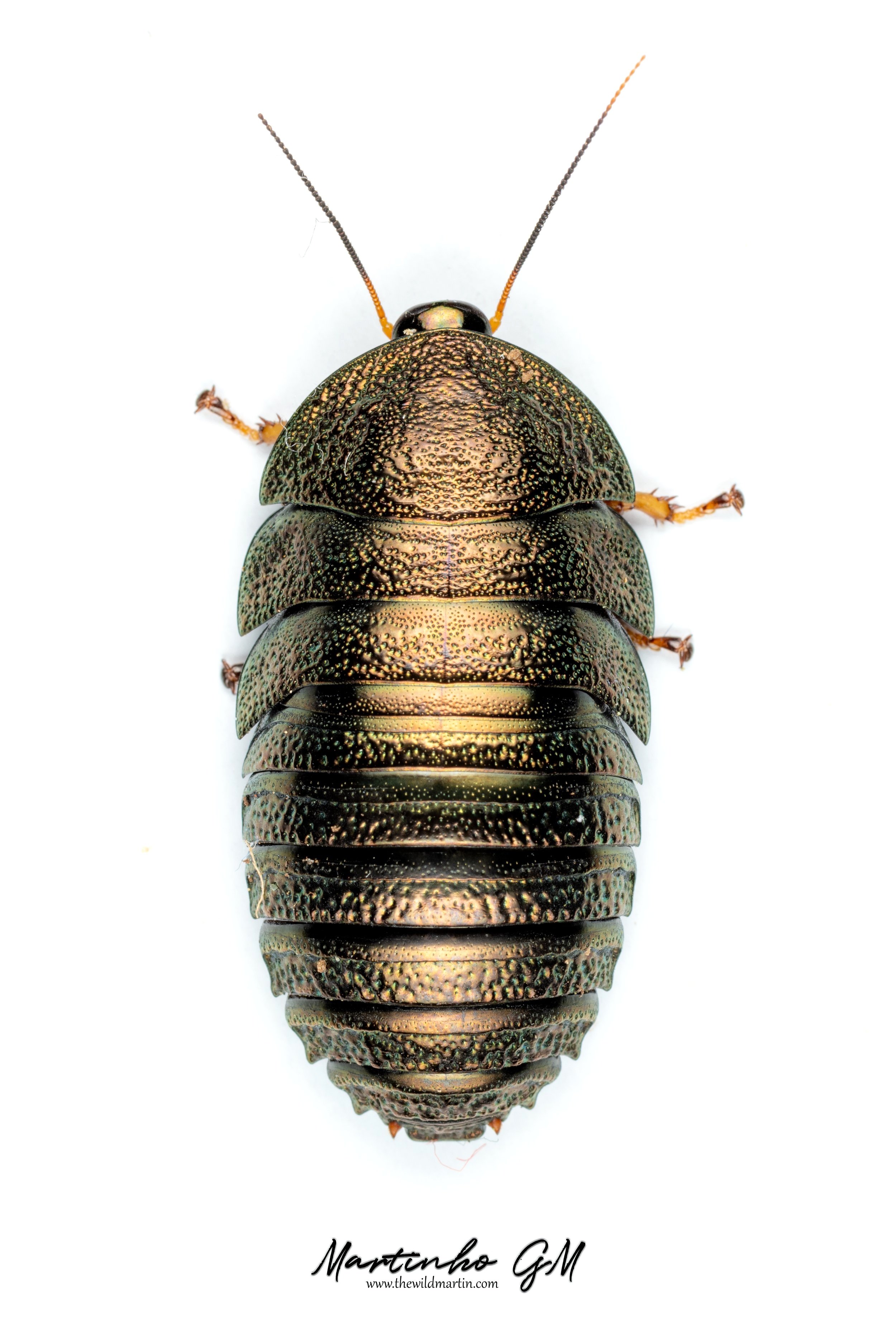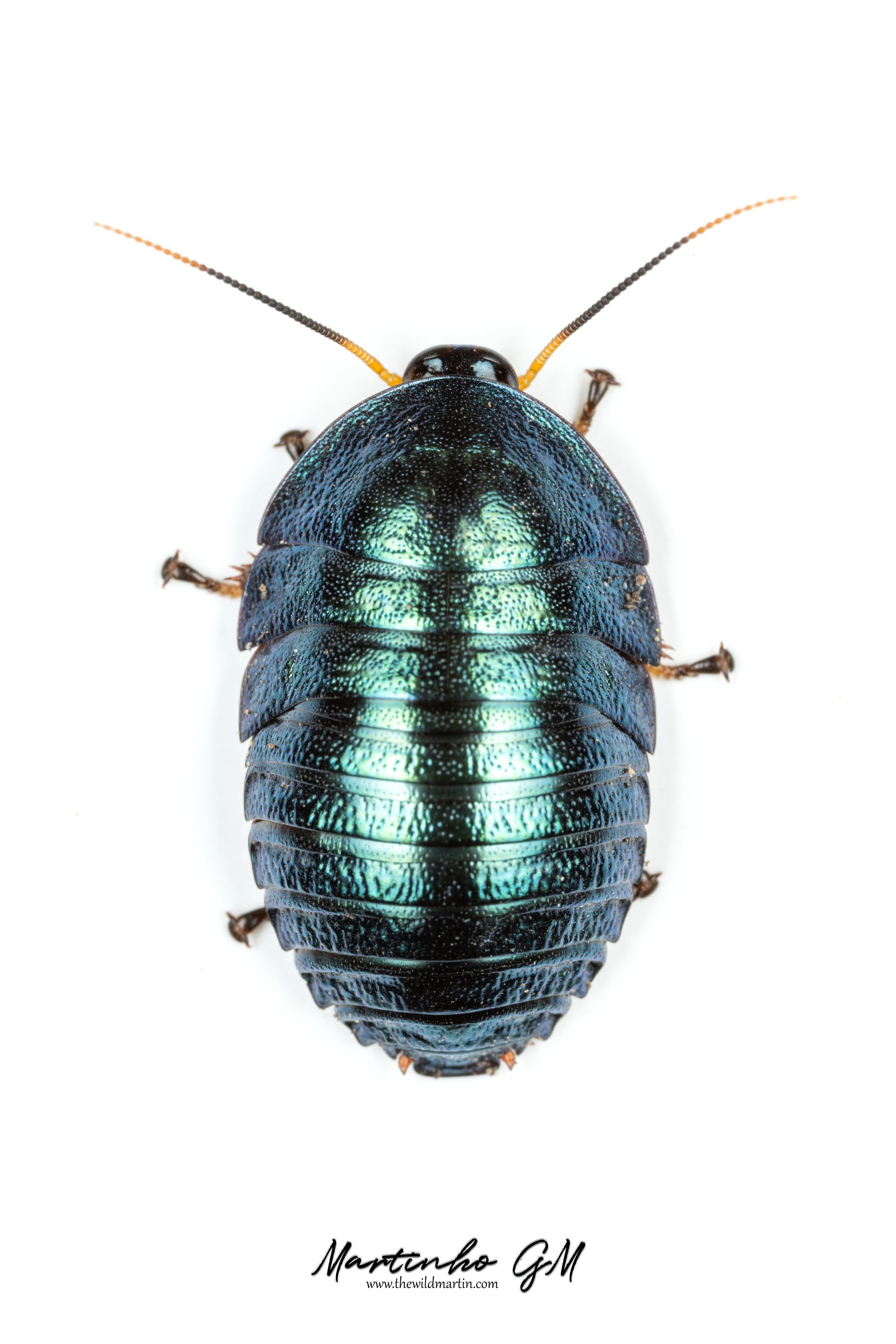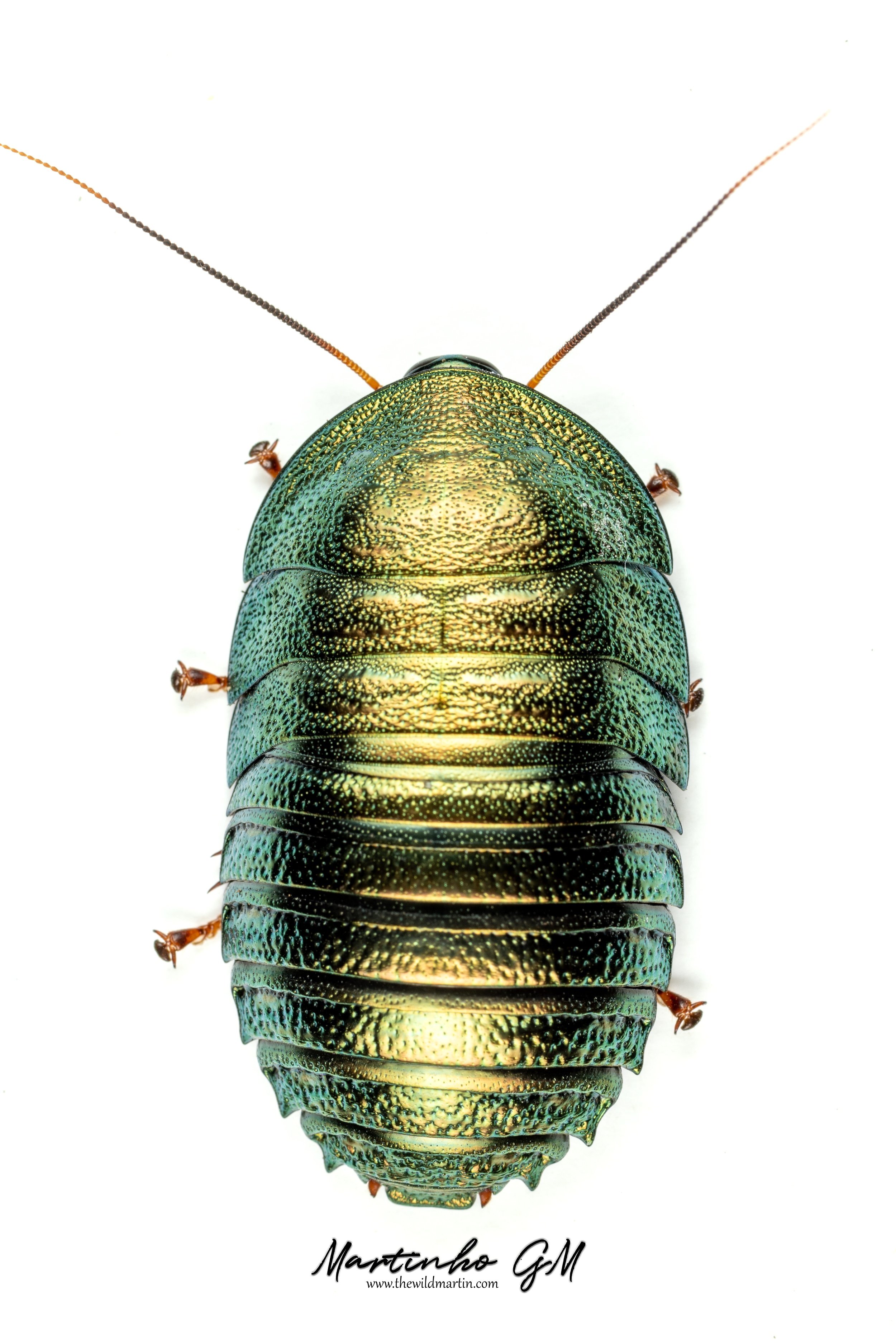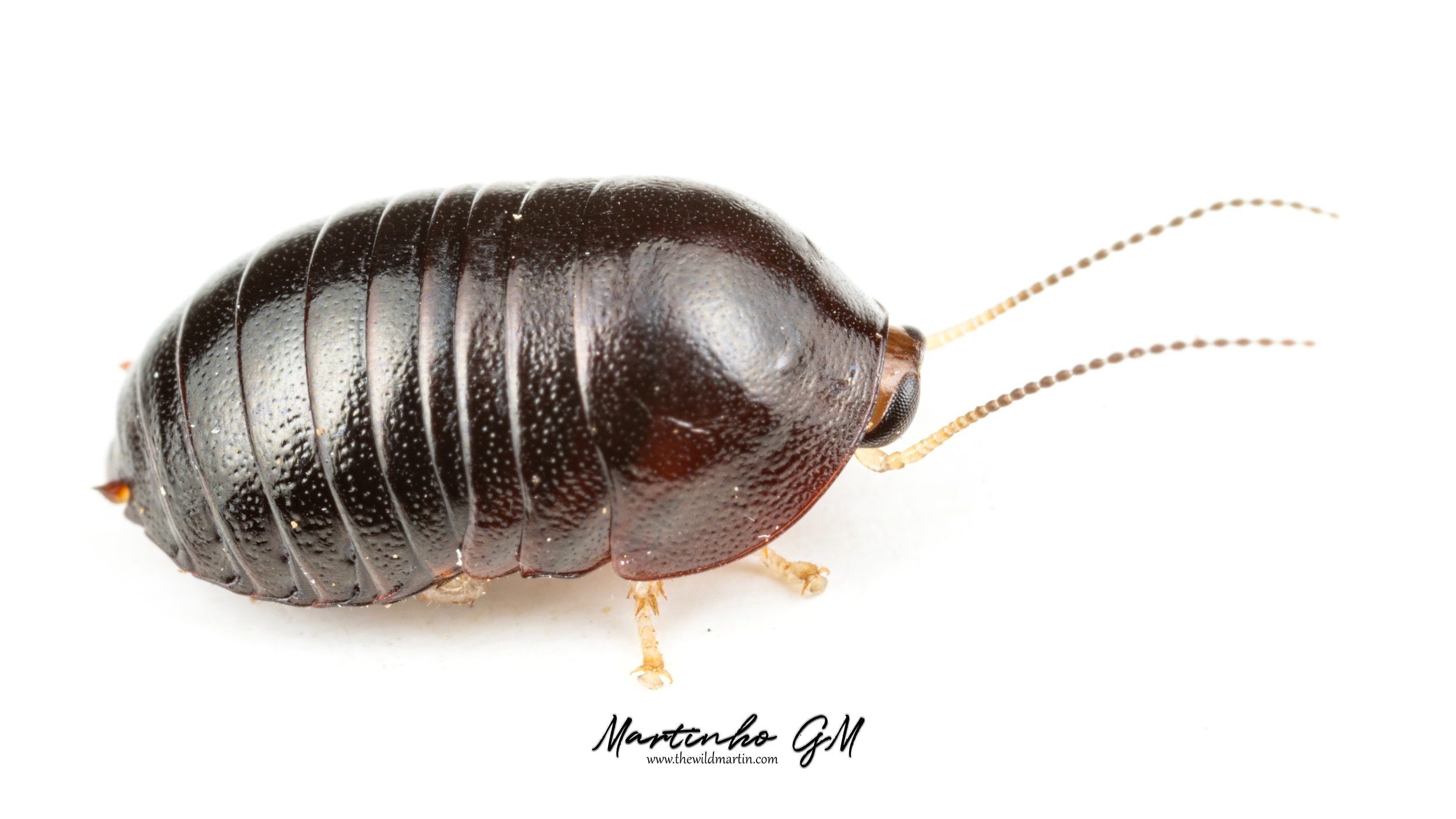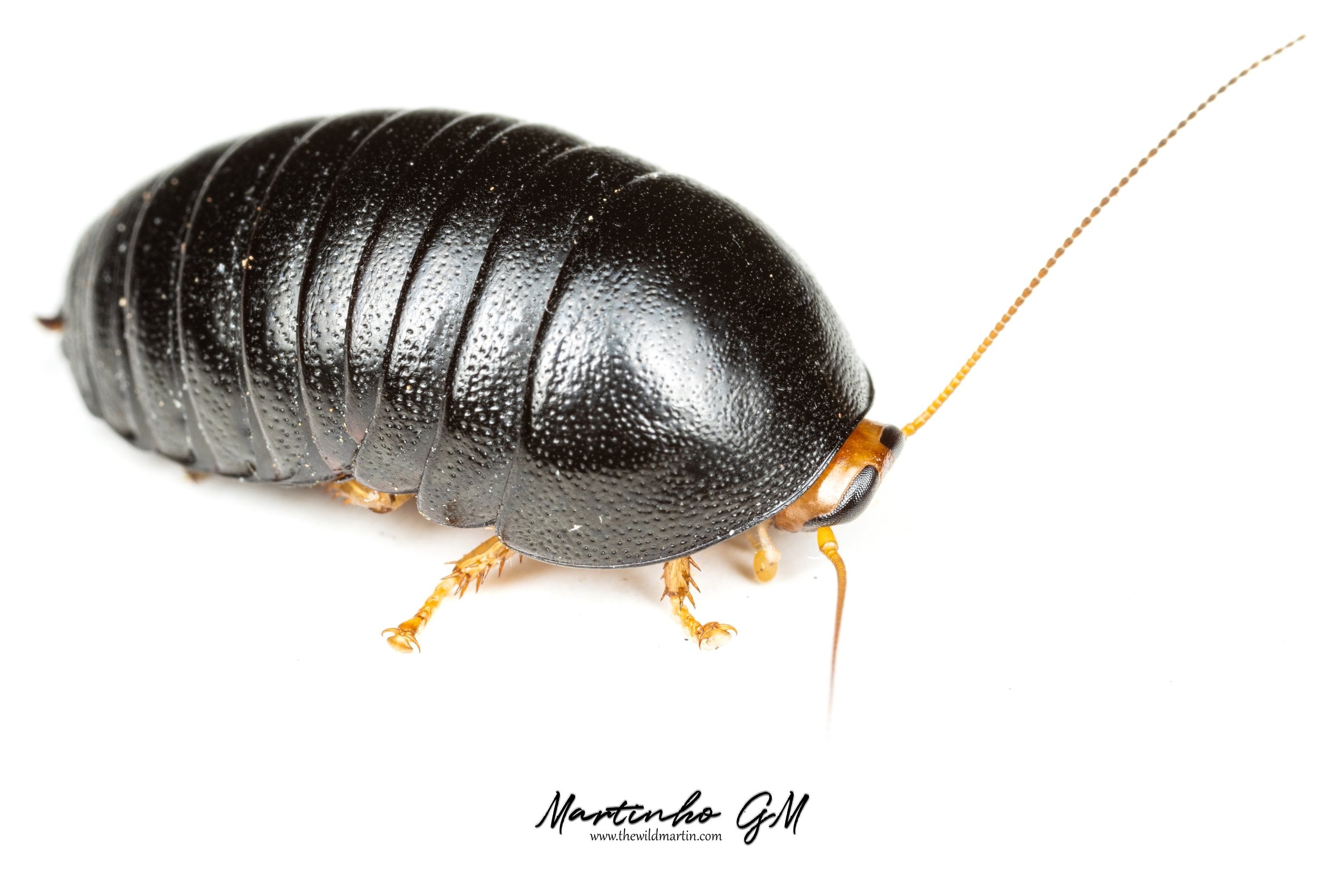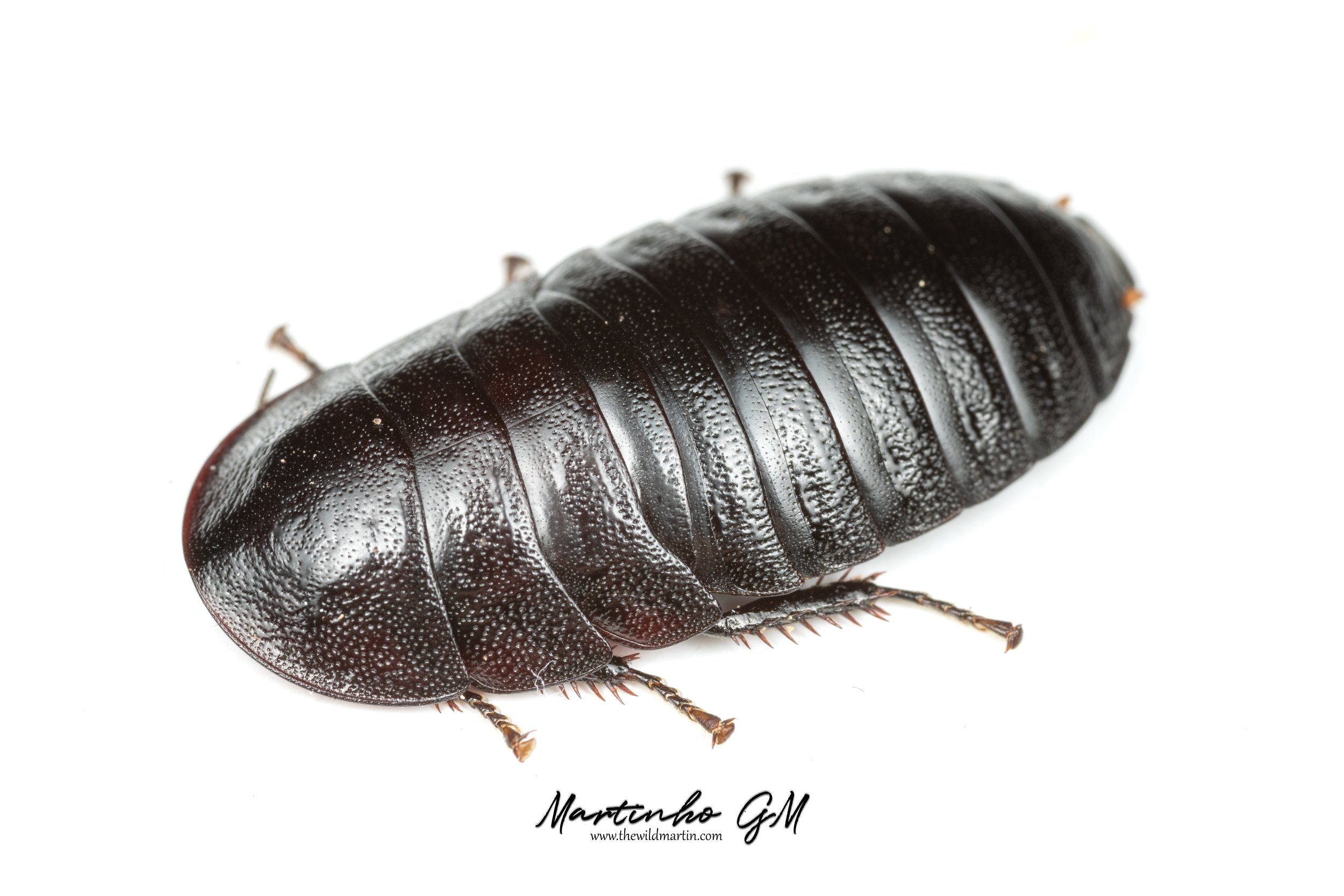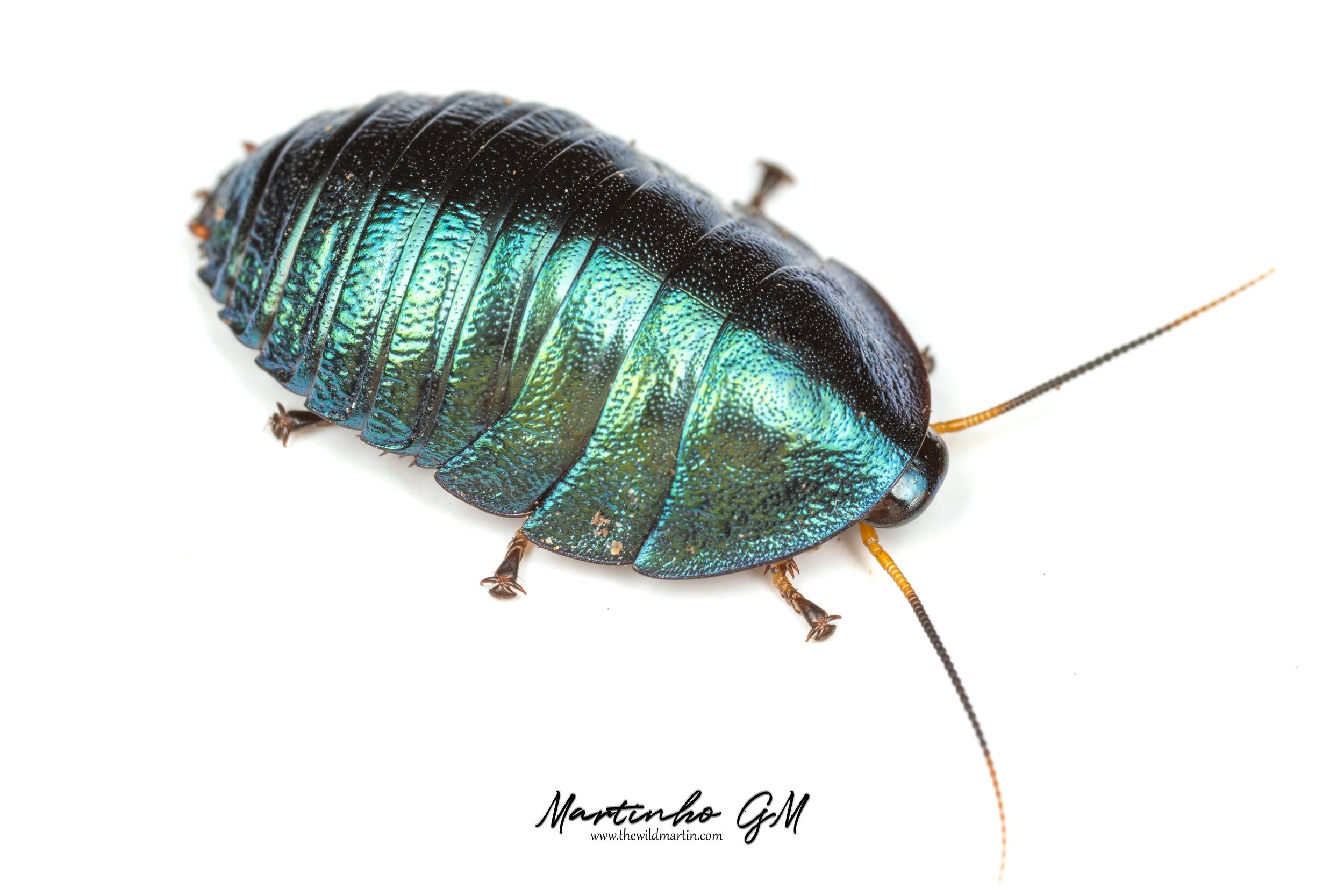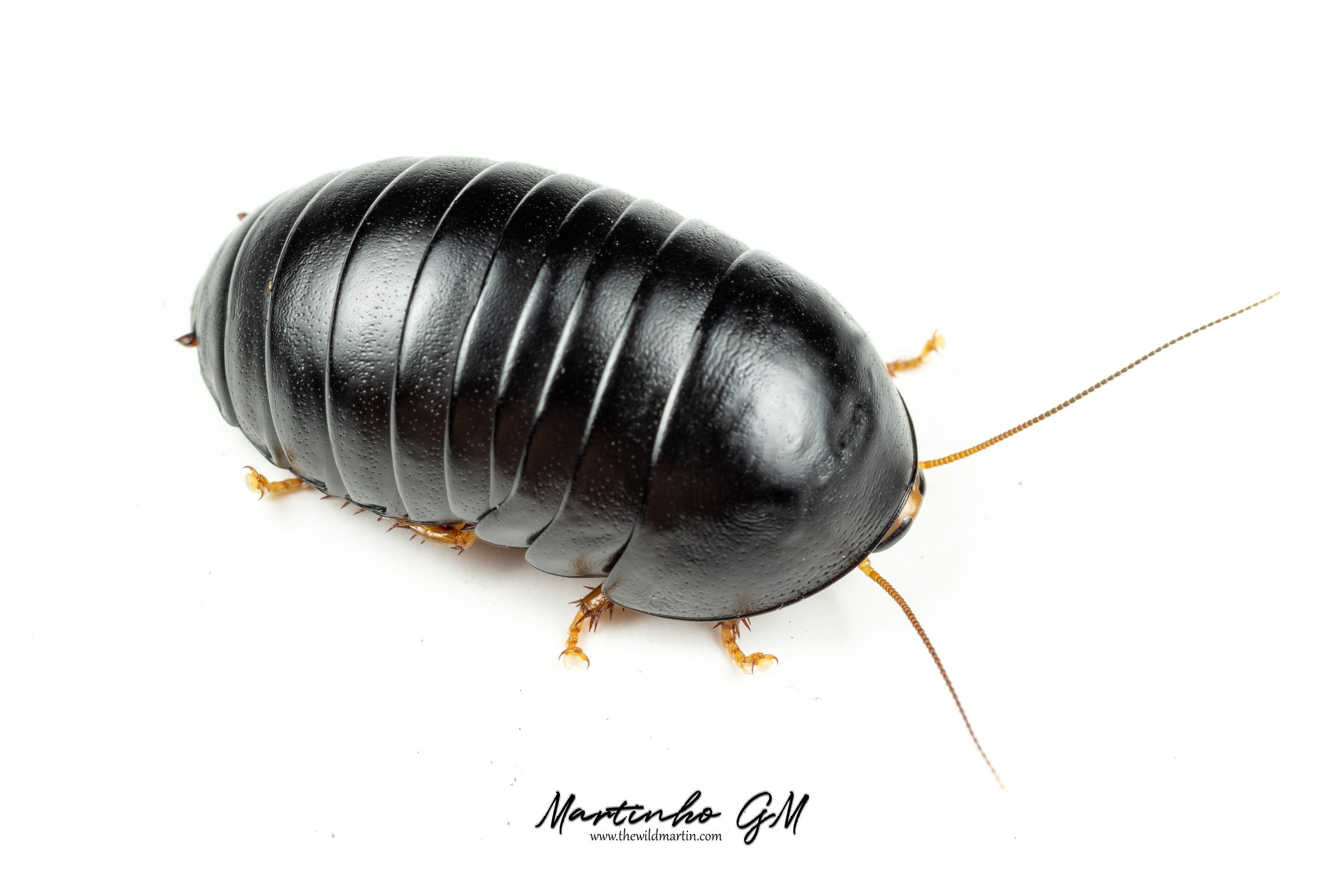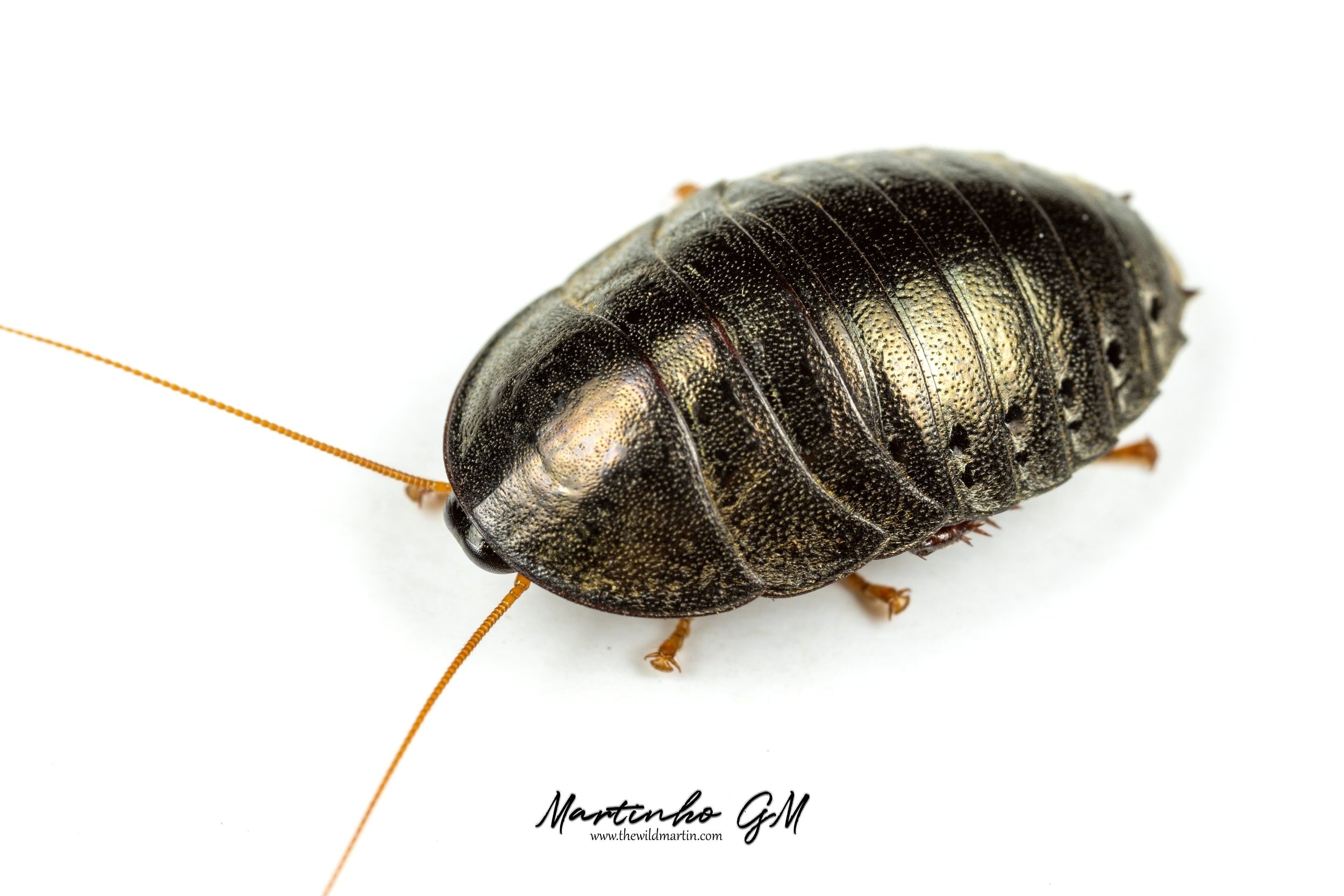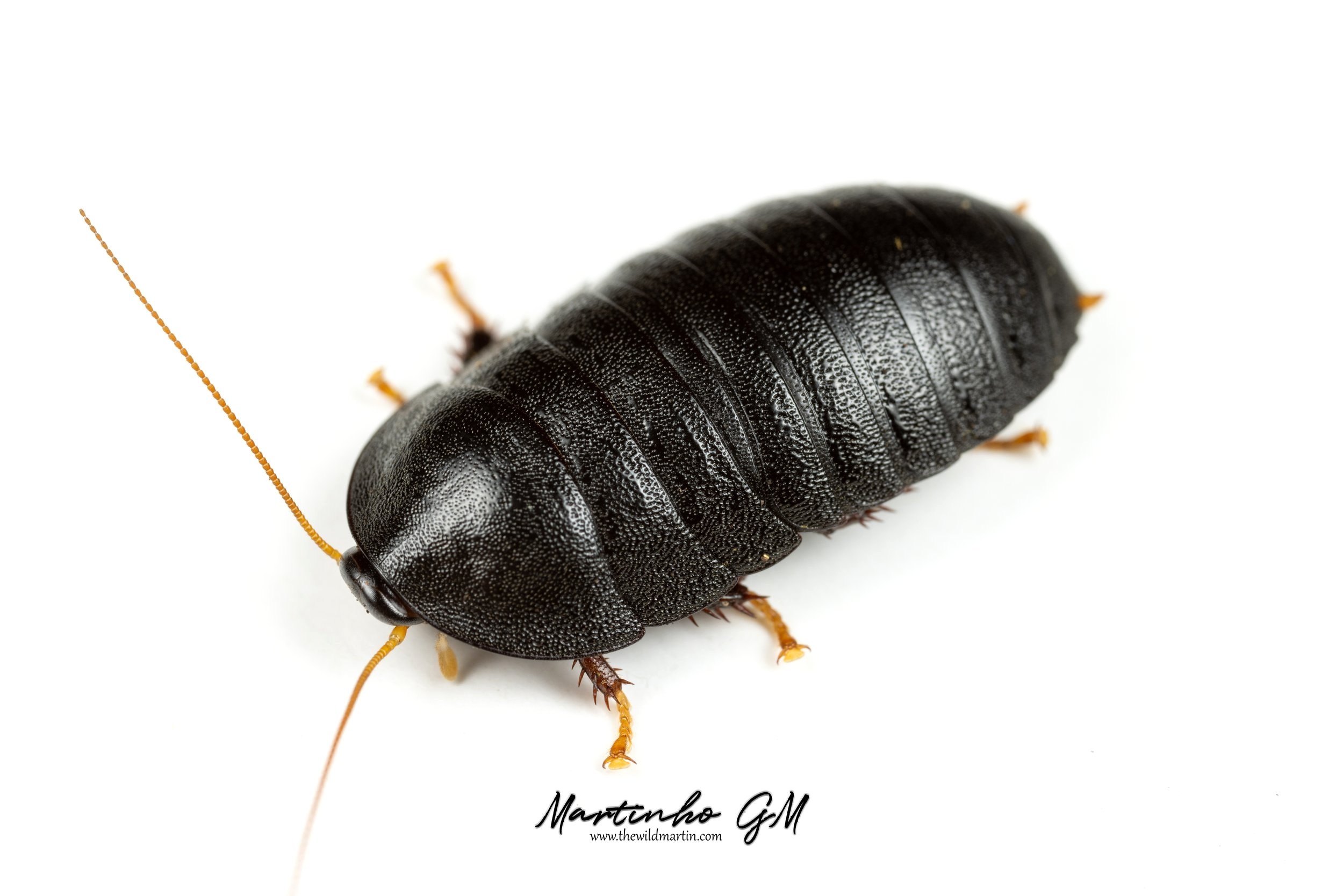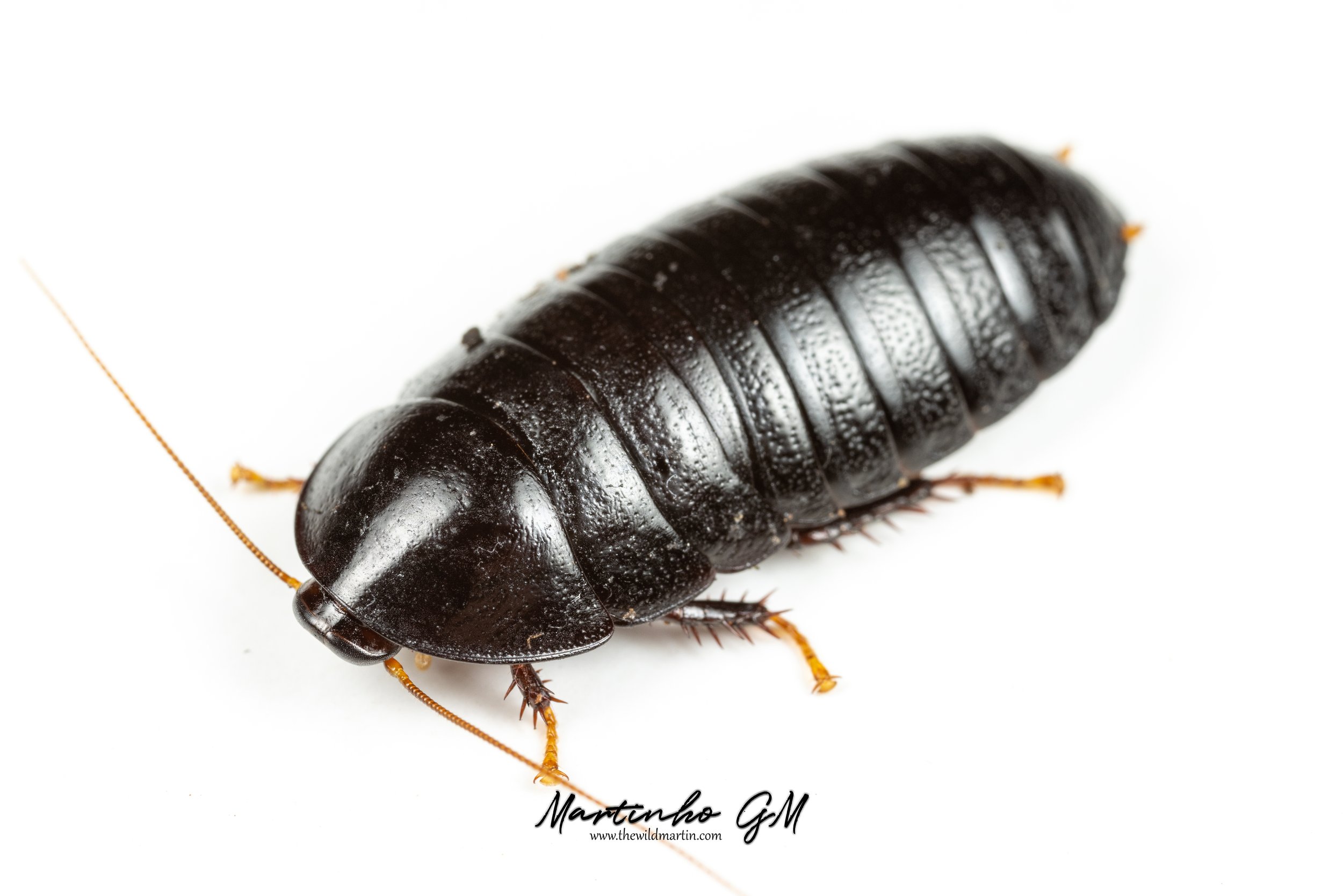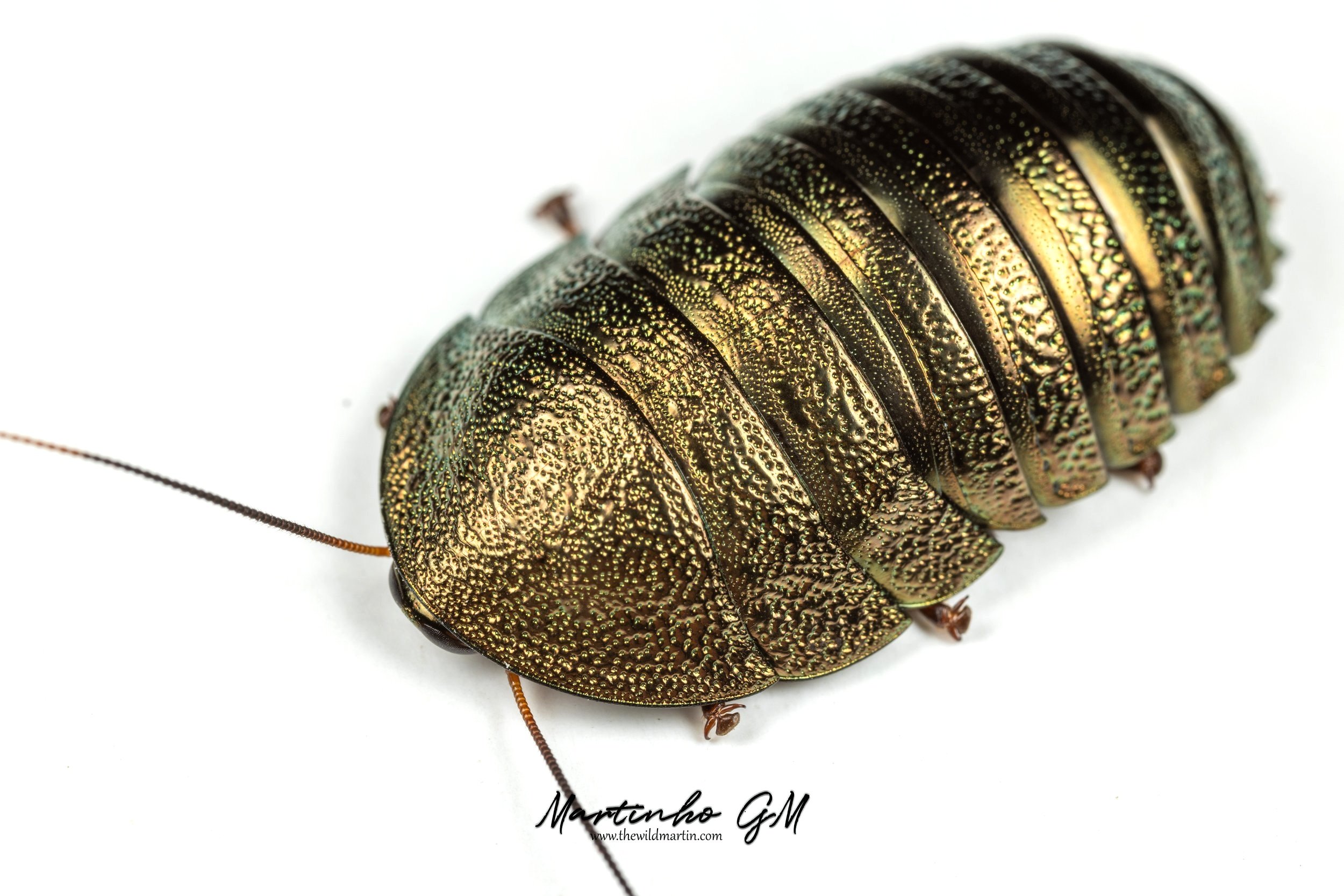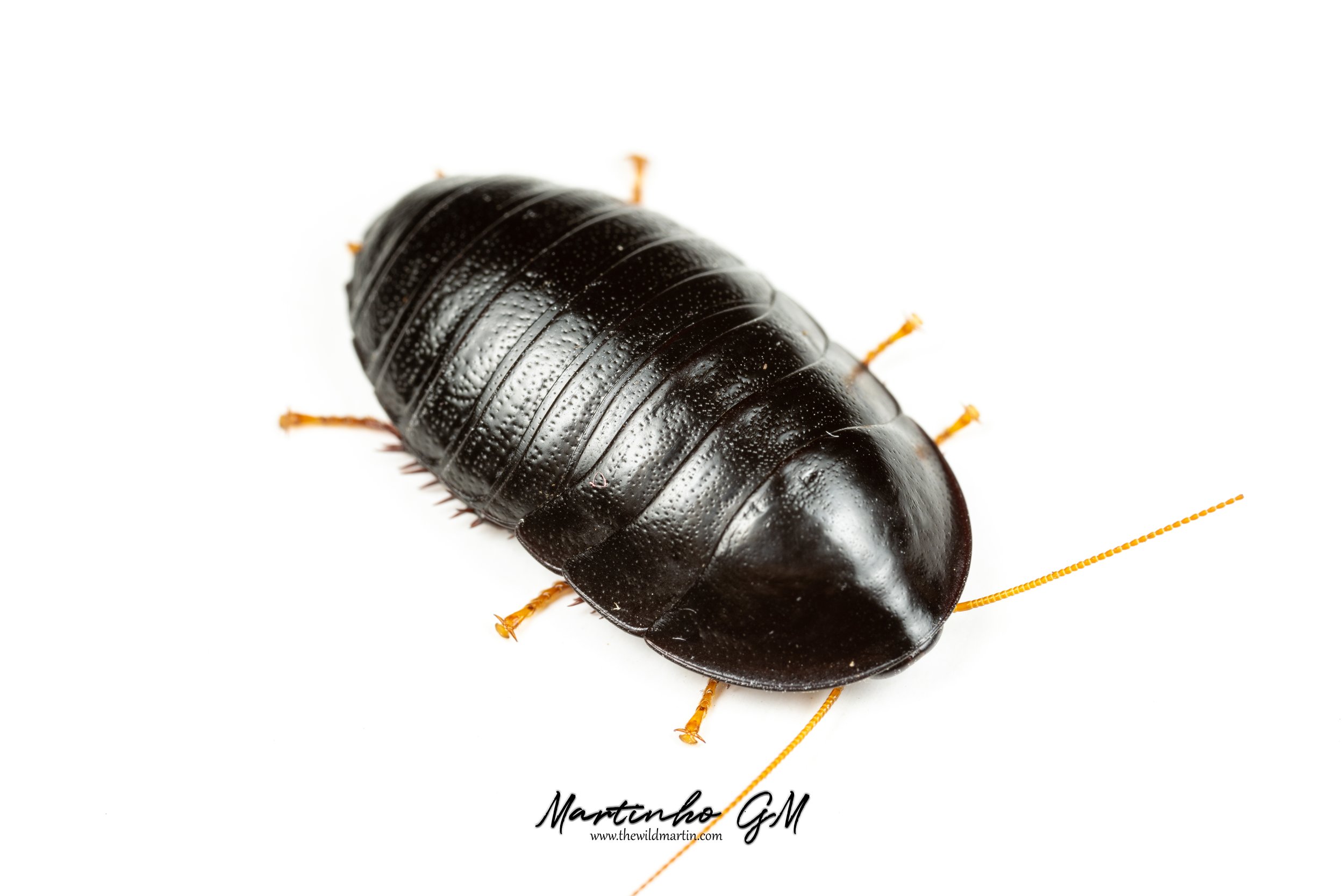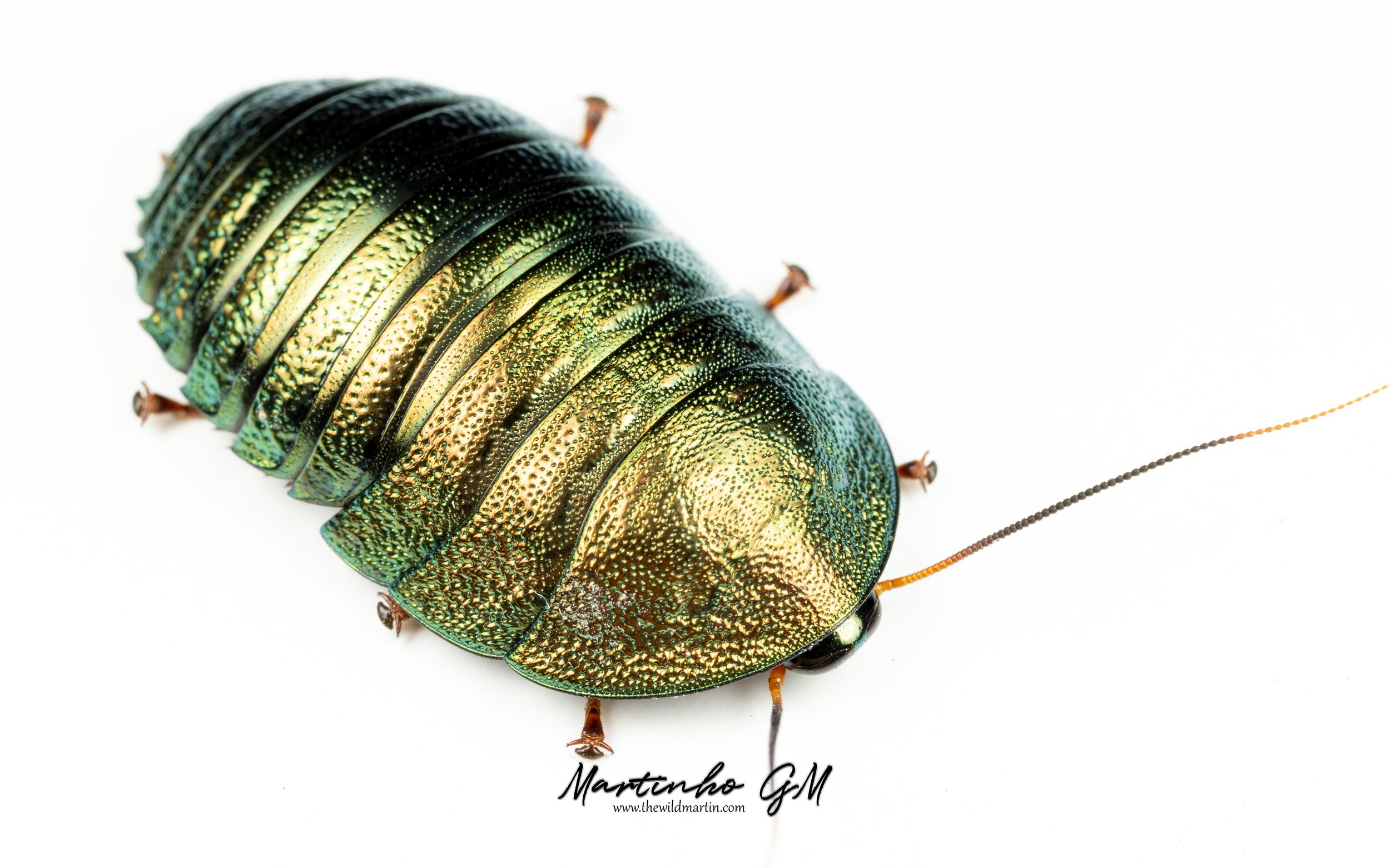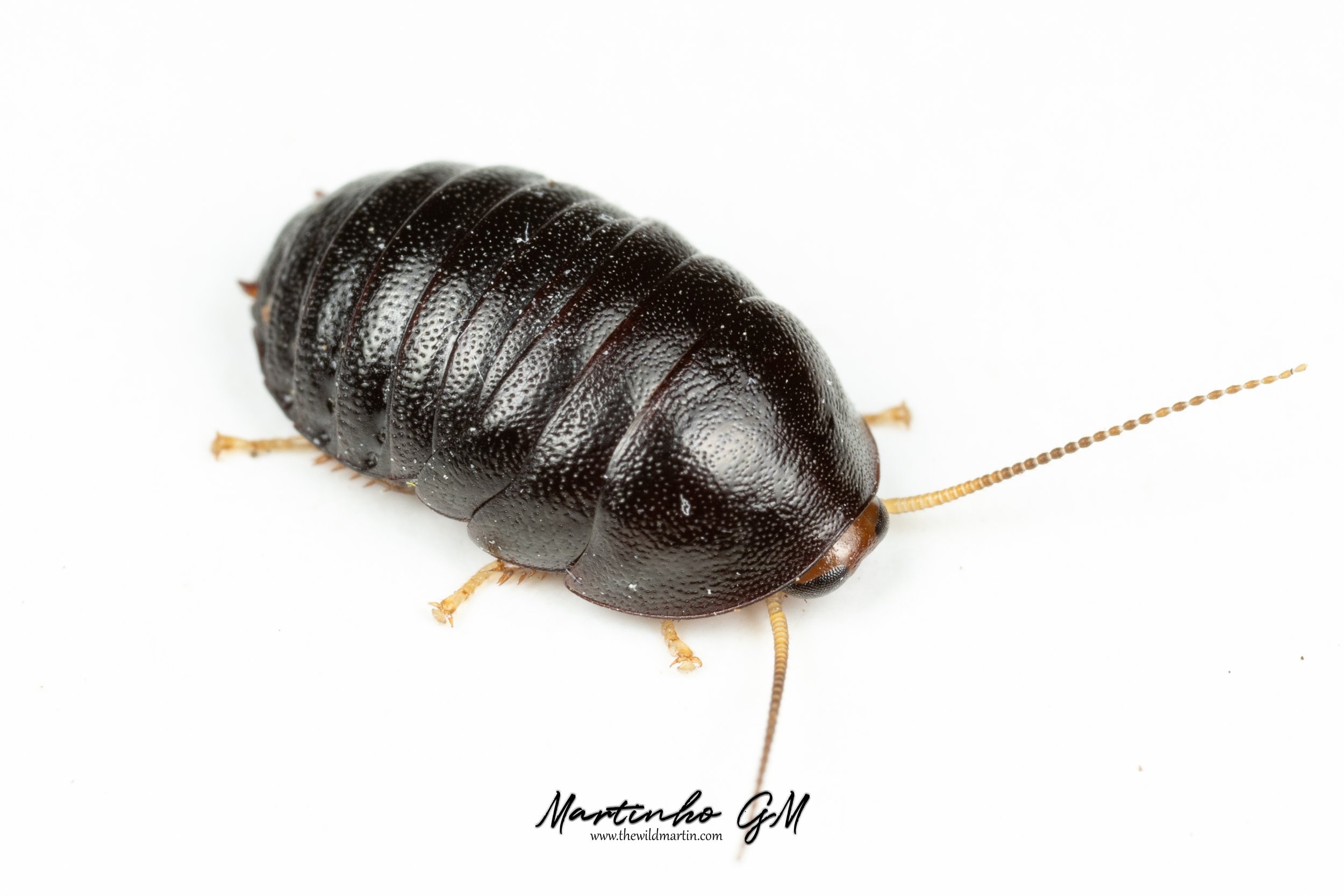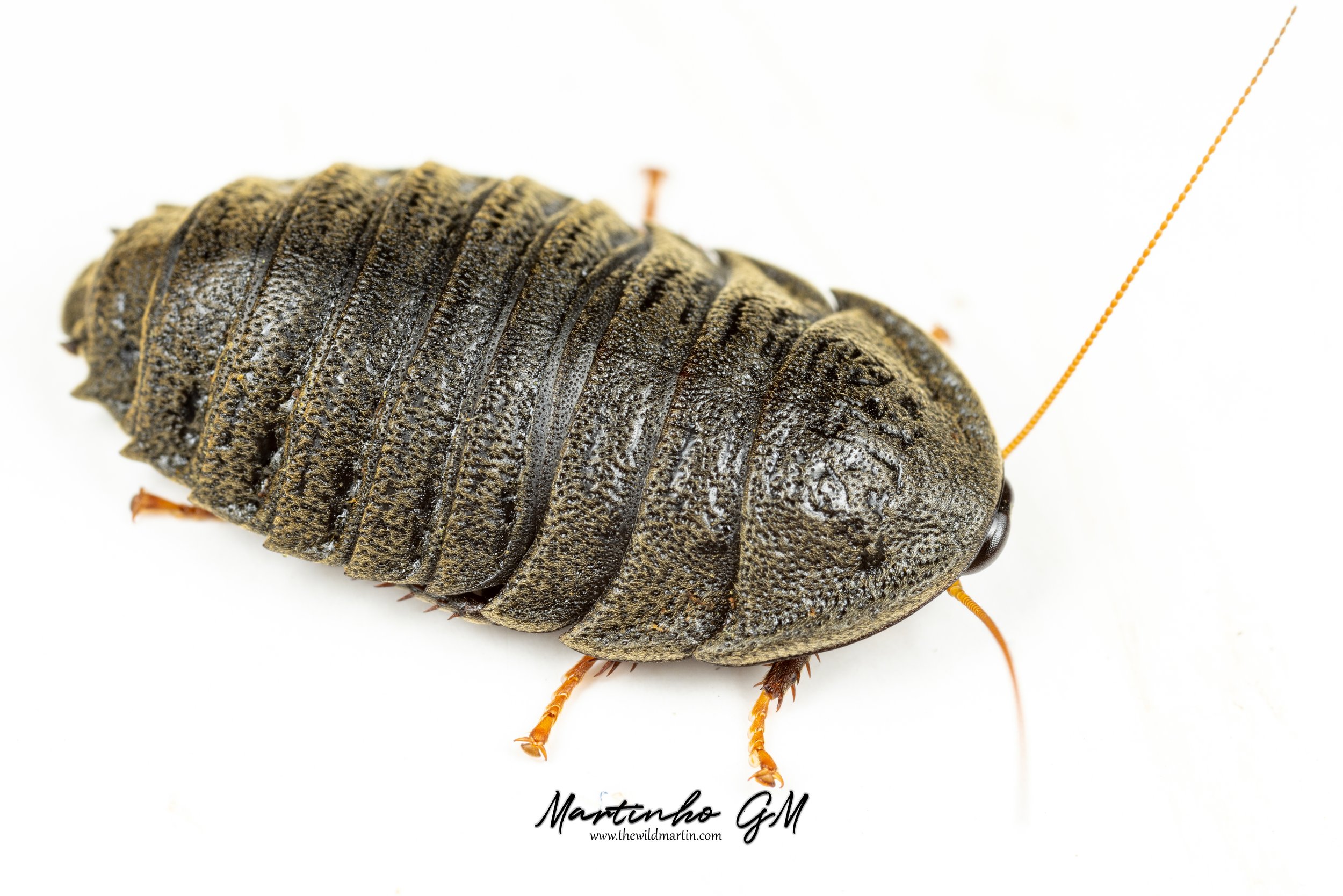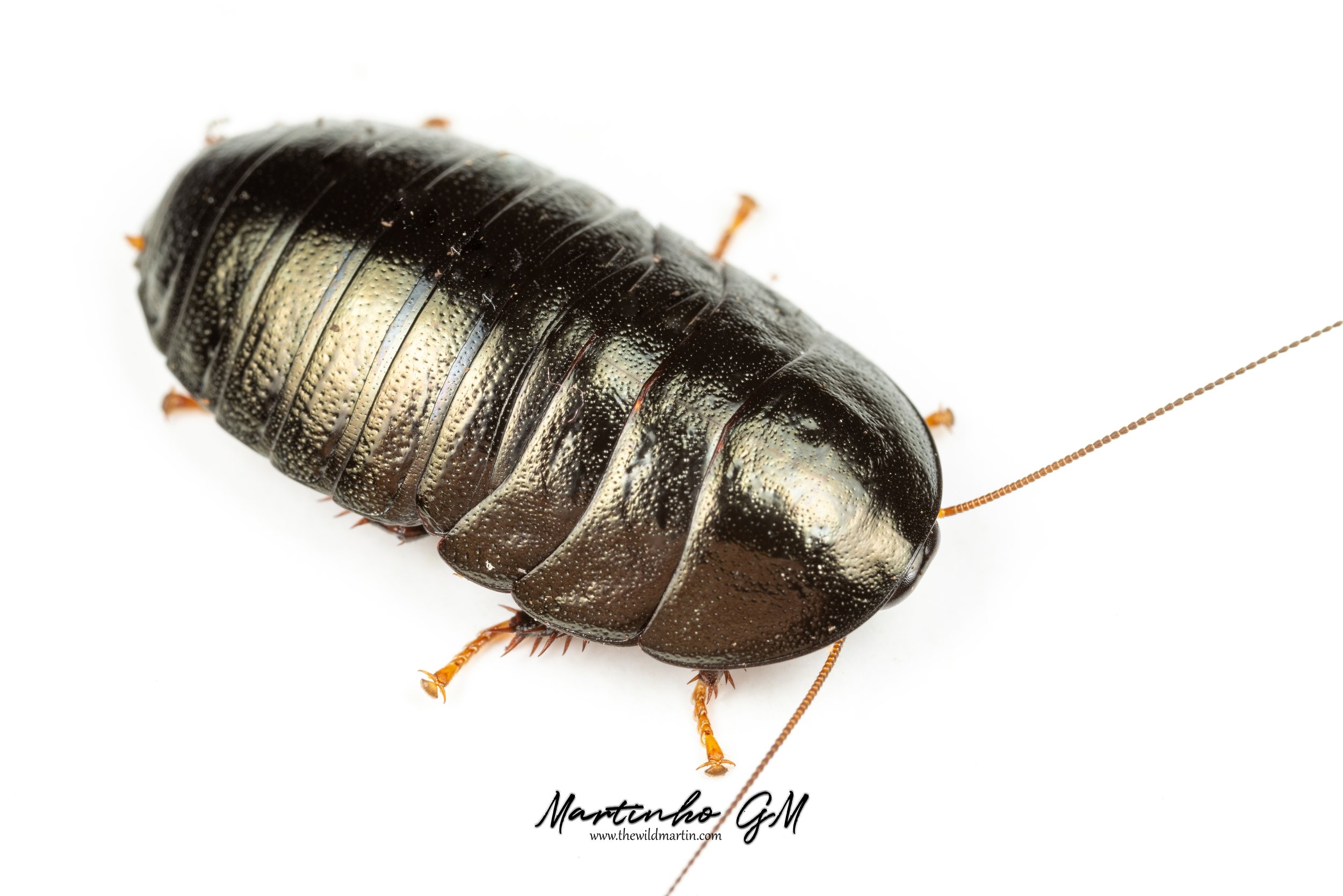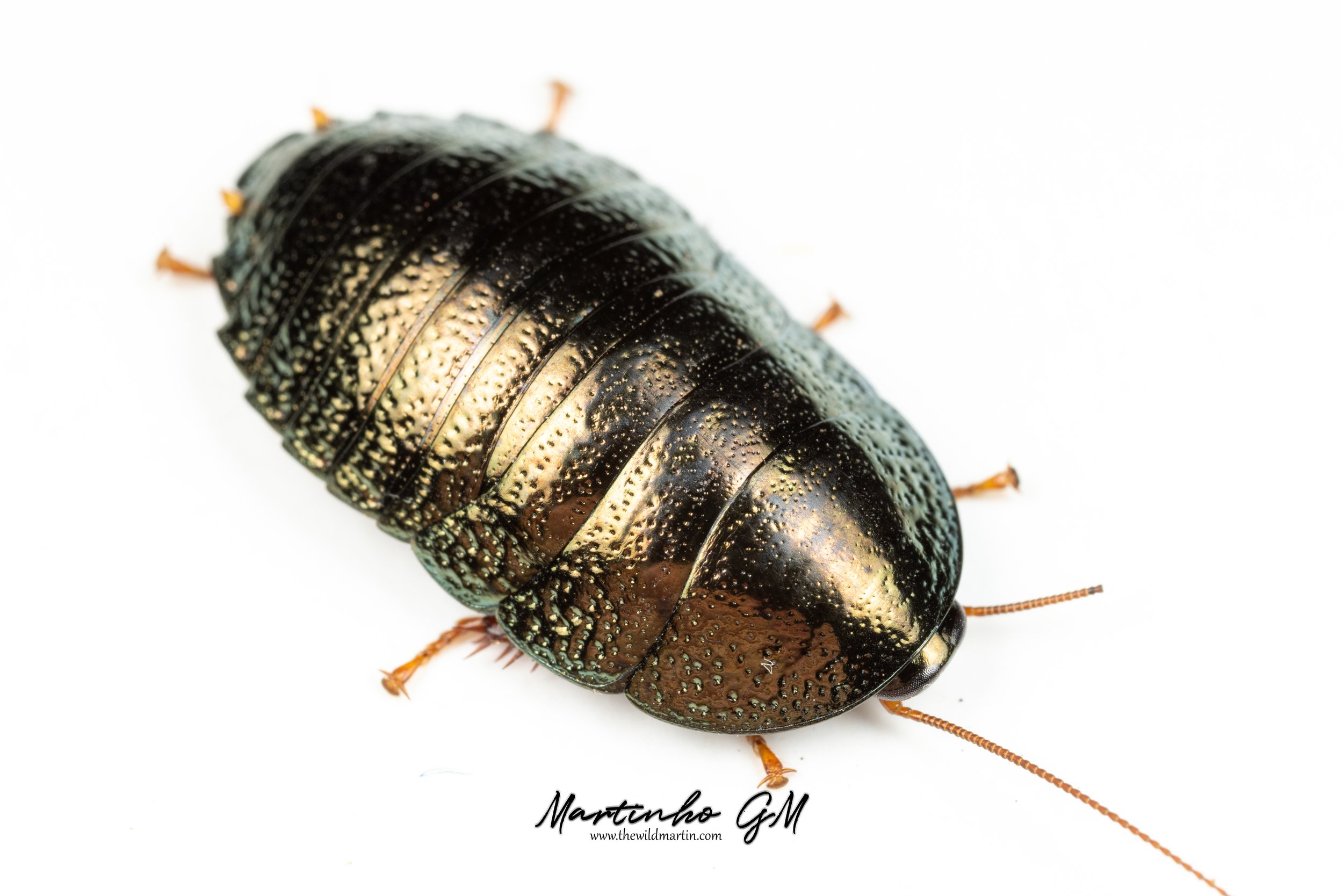Perisphaerus and Pseudoglomeris, Care Guide and Ecology
INTRODUCTION / SUBFAMILY / GENUS
The genus Perisphaerus and Pseudoglomeris belong to the family Blaberidae and subfamily Perisphaerinae.
Perisphaerus sp. “Nautilus” adult female
This Perisphaerinae subfamily is comprised of 19 genus: Bantua, Compsagis, Corydidarum, Cyrtotria, Derocalymma, Ellipsica, Elliptoblatta, Glomerexis, Gymnonyx, Hostilia, Laxta, Neolaxta, Perisphaeria, Perisphaerus, Pilema, Platysilpha, Poeciloblatta, Pseudoglomeris and Zuluia.
Perisphaerinae are blaberid cockroaches remarkable for female neoteny, which means the body size is virtually the only difference in external morphology between instar nymphs and adult females.
In the genus Perisphaerus, males from different species are almost all identical and macropterous, in the genus Pseudoglomeris males from only two species are brachypterous and only one is apterous, while the others are also macropterous.
Pseudoglomeris semisulcata male
The subgenus Glomerexis consists of three alpine flightless (brachypterous) species mentioned above:
P. (G.) tibetana,
P. (G.) semisulcata and
P. (G.) angustifolia.
Being tibetana the apterous species. Glomerexis has been resurrected from synonymy of Pseudoglomeris and is now considered as a subgenus of the latter.
COMMON NAME
Jean Audinet-Serville describing new species of cockroaches, erected a genus he called “Périsphère.” He used this French name to refer to a very peculiar group of cockroaches that roll into a ball (“sphère” = sphere). He “Latinized” this French name, and “Périsphère” then became “Perisphaerus.”
Perisphaerus female starting to roll into a ball as protection mechanism
In the Perisphaerus genus, the body of female distinctly arcuate in section, can roll itself into a ball, therefore they are commonly called pill cockroaches or roly poly roach. The capability of females of Perisphaerus to roll itself into a ball probably may be considered a distinctive feature of this genus.
Perisphaerus female completely rolled into a ball
Meanwhile, in the Pseudoglomeris has their name suggests, females cannot roll up into a ball, hence the common name false/fake pill cockroach.
Pseudo meaning false, not genuine, fake and glomeris referring to ball-shaped. The Pill Roach look a like.
Males of both genus also cannot roll into balls.
DESCRIPTION
General black color usually without contrasting elements. In females, surfaces thickened and hardened (as a result of strong sclerotization); in males, such type of surfaces present only on pronotum; sometimes, surfaces with metallic luster. Luster can have red/orange hues.
The most distinct to all is most surely Pseudoglomeris magnifica, which is kept as a pet because of its beautiful appearance. showcasing greenish, blueish and orange bronze, metallic, sometimes metallic green, rarely metallic blue (a syntype).
DISTRIBUTION
Perisphaeriidae are known from south-eastern and southern Africa and Madagascar, as well as Asia and in Australia.
Perisphaerus and Pseudoglomeris are distributed in Asia, with one Perisphaerus species also occurring in Australia.
ECOLOGY
The species of Perisphaerus inhabit very different biomes. They were found in tropical rain forest as well as in open woodlands and bushes. Their life habits, although poorly known seem to be highly diversified. Most species will inhabit ground litter or perch on trunks or live under loose bark.
In Pseudoglomeris, in terms of habitat, some species can be found in arid mountainous alpine areas, with altitude ca. 2000–3800 m (P.montana, P.tibetana, P.semisulcata and P.angustifolia, etc). While other species of Pseudoglomeris are mainly found in tropical and subtropical areas with low altitude similar to Perisphaerus.
It is unknown whether some species are distasteful to predators, and it is doubtful that they mimic a particular species of pillbug. In the ball position, however, they are protected from invertebrate predators by their hard integument. All of the vulnerable structures of a rolled-up female are completely hidden, insuring her safety from the attacks of predators
SEXUAL DIMORPHISM
Sexual dimorphism strongly present:
male with tegmina and wings fully developed, and thickened surfaces are present only on the pronotum
female completely wingless.
Pseudoglomeris magnifica adult male and adult female
One of the difficulties in Perisphaerinae taxonomy is their sexual dimorphism, a result of female neoteny. High-definition photos are therefore badly needed for determining species.
Neoteny refers to the retention of juvenile features in the adult stages. As such, all nymphs (male and female) are similar to the adult female, but smaller. With the exception of the last instar of male nymph with lateral parts of meso- and metathorax distinctly enlarged.
Most species in Perisphaeriinae were described upon females since males are less frequent in collection; therefore new species propositions are based on females for comparison with known genera.
LIFE CYCLE
Depending on the species and their habitat, nymphs can take up to 8 to 9 months to fully mature. Normally, in Perisphaerus species males tend to be very short lived only 2 to 4 months, while in Pseudoglomeris they can be very long lived reaching up to 8 months.
Adult females on both genus are normally able to live up to two years in total.
REPRODUCTION/BREEDING
After successful mating, adult females will be able to give birth within 3 or 4 months, depending on the temperature and time of the year. They give birth multiple times within their life span, and each time they will generate between 12 to 20 nymphs.
Pseudoglomeris aerea with clutch of new born nymphs
For example, a study as reported that - “three larger females (23 mm long) of a different species from Sibuyan Island had 15, 17, and 18 eggs in their oothecae. Whereas these numbers appear small for an ovoviviparous species, the mother cockroach probably would have a difficult time carrying around even this relatively small number of young for any length of time.”
Perisphaeriinae live in trees and dead vegetation and exhibit uniparental (maternal) care. Adult females are morphologically modified with a pair of orifices located between the coxae of the middle and hind legs; first instars have an elongate head and mouthparts specialized to plug into these cavities. Perisphaeriinae is somewhat reminiscent of marsupials, with highly altricial offspring attached to a maternal “teat”.
Extract from article:
“In the subfamily Perisphaeriinae there are two recorded cases of nymphs clinging to the ventral surface of the mother for both protection and nutrition. The subsocial relationship in Perisphaeriinae appears elaborate and intriguing but is known only from examinations of museum specimens. Nymphs of this genus cling to the undersurface of the female for at least two instars. The first-instar nymph is blind and has an elongate head and specialized galeae, which suggest that it takes in liquid food from the mother. There are four distinct orifices on the ventral surface of the female, with one pair occurring between the eoxae of both the middle and hind legs. Specimens have been collected with the mouthparts of a nymph inserted into one of these orifices of the mother, and the ‘proboscis’ of nymphs is 0.3mm wide, about the same width as the intercoxal opening in the female. The food of the nymphs may be glandular secretions or possibly hemolymph. The female can roll up into a ball, protecting the clinging nymphs inside. Males are winged and do not show this behavior. At least nine nymphs are able to remain attached when the female assumes the defensive position.”
ENCLOSURE
I have kept both genus in two different types of enclosures. I have tried both horizontal and vertical enclosures. In both cases with similar results. I personally have a preference for vertical enclosures because I think it reflects better their arboreal nature and visually is also more pleasing, but in terms of maintenance, horizontal enclosures make it easier to maintain.
In vertical enclosures, the roaches like to hide on the top corners, or at mid height in between the cork slabs. This makes it difficult sometimes to open the enclosure from the top without having few trying to escape. In horizontal enclosures, the roaches like to hide in the multiple layers of bark, lay horizontally, thus making it easier to access them.
AIR, SOIL HUMIDITY and VENTILATION
In both enclosure types, I always provide coco fiber as substrate, moist once a week or once every two weeks (please note that my air humidity is at 80%, so I don’t have the need to water so frequently). And make sure you have enough hides for them.
TEMPERATURE
In terms of temperature, most species are very tolerant to lower temperatures (as low as 8C to 10C, certainly even lower in the wild), but in my experience, not all do not do well at high temperatures (over 28C), especially the alpine species, such as P.aerea, P.beybienkoi, P.montana, P.semisulcata, P.tibetana and P.angustifolia.
The alpine Pseudoglomeris species will definitely require a short winter diapause, from November to February.
BEHAVIOURS
The social behavior of these cockroaches is poorly known; larvae and adults of some species are most of the times found clumped. Most Perisphaeriinae species have striking mother–offspring relationships, where the nymphs will be found clumped together with their mother for the first two instars.
Pseudoglomeris aerea females with multiple clutches of nymphs
FORAGING AND FEEDING
Most species will be active at night, when they will mainly forage for food, etc.
Pseudoglomeris magnifica feeding at night on apples.
It is noteworthy, then, that in the three genera where first instars are known to exhibit eye reduction (Salganea) or loss (Cryptocercus, Perisphaerus), neonates are fed on parental secretions: oral fluids (Salganea), anal fluids (Cryptocercus), or in Perisphaerus, maternal exudates. So it is important not to disturb roach mothers while they have their nymphs attached to them.
Pseudoglomeris magnifica feeding at night on dry pellet food.
MAINTENANCE
The only issue with their maintenance is that these roaches will not consume their exoskeletons like most other species do, due to their incredible hardness. And so, as your colony grows, you can end up with hundreds of discarded shells on the bottom of your enclosure. Normally to avoid the trouble of having too many escapees, I personally prefer to make a whole new enclosure, and transporting the bark (full of roaches) from one enclosure to the other, and then just grabbing the ones which were left behind. I find this less time consuming than picking up sheds one by one.
CONCLUSION
These are truly fascinating genuses to have in your collection. Once you manage to grasp their husbandry, they are not demanding at all. Besides being especially cute and totally not roach looking, they will even spark the curiosity of people who normally are not into roaches.
Also, species vary in sizes, colors, patterns, and textures!
Thank you for taking the time to read this, I hope you have enjoyed, let me know if you have any questions, I would be pleased to answer them.
And if you would like to know in more detail my keeping adventures with specific species please go over to “Log of Current Kept Roach Species” - Perisphaerus and Pseudoglomeris, and click the species you would like to see.
Thank you once again,
Cheers!




